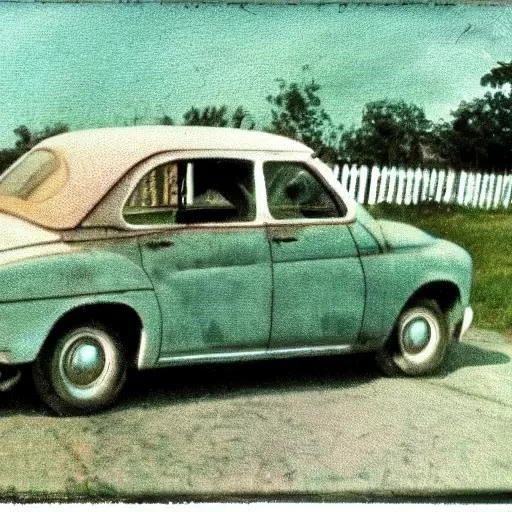
In the dynamic world of automotive ownership, few questions spark as much immediate apprehension as, “How much does it cost to get a car painted?” This seemingly straightforward inquiry often conjures images of exorbitant bills and hidden fees, leading many to postpone or even abandon the idea of refreshing their beloved vehicle’s exterior. Yet, beneath the initial sticker shock lies a nuanced landscape of craftsmanship, material science, and strategic investment. Far from being a mere cosmetic indulgence, a professional paint job is a critical undertaking that can significantly impact a car’s longevity, aesthetic appeal, and ultimately, its resale value; It’s a transformative process, breathing new life into tired metal and restoring the pride of ownership.
Understanding the true value of a car paint job requires looking beyond the superficial cost. It’s not just about applying a new layer of color; it’s an intricate dance of meticulous preparation, precise application, and advanced finishing techniques, each step contributing significantly to the final outcome. From battling the relentless assault of UV rays and road debris to reversing the unsightly effects of minor accidents and fading, a quality paint application serves as your vehicle’s primary shield, preserving its structural integrity and visual allure for years to come. By appreciating the depth of expertise and the array of variables involved, consumers can make informed decisions, viewing this often-misunderstood expense not as a burden, but as a remarkably astute investment in their automotive asset.
| Category | Key Factors Influencing Cost | Typical Cost Range (USD) | Notes & Benefits |
|---|---|---|---|
| Vehicle Size & Type | Smaller cars (compacts) vs. larger vehicles (SUVs, trucks). | $300 ⏤ $1,000 (Basic) $1,500 ⎯ $5,000 (Standard) $5,000 ⏤ $15,000+ (Premium/Custom) | Larger vehicles require more materials and labor, increasing overall cost. |
| Paint Quality & Type | Standard enamel, acrylic urethane, metallic, pearl, matte, multi-stage. | Included in overall range. | Higher quality paints offer better durability, gloss retention, and protection. Custom finishes add significant expense. |
| Surface Preparation | Dent repair, rust removal, sanding, body filler, primer application. | Often 50-70% of total cost. | Absolutely crucial for a lasting, high-quality finish. Neglecting this leads to premature paint failure. |
| Color Change Complexity | Repainting the same color vs. changing to a completely different one. | Adds 20-50% to cost. | Color changes require painting door jambs, engine bay, trunk interior for a consistent look. |
| Shop Reputation & Location | Specialized body shops, dealership services, independent garages. Geographical labor rates. | Varies significantly. | Premium shops offer superior craftsmanship and warranties. Urban areas generally have higher labor costs. |
| Benefits of a Quality Paint Job | Enhanced aesthetics, protection against elements, increased resale value, personal satisfaction. | Investment yields returns. | A well-maintained exterior can significantly boost a vehicle’s market appeal and prevent costly rust repairs down the line. |
Delving deeper into the mechanics, the initial cost assessment for getting your car painted is largely dictated by a constellation of factors, each contributing to the final figure. Foremost among these is the sheer size of the vehicle; naturally, a compact sedan requires less material and labor than a full-sized SUV or a sprawling truck. Beyond dimensions, the chosen paint quality and type play a pivotal role. Basic enamel paints offer an economical solution, while premium acrylic urethanes, with their superior durability and vibrant finishes, command a higher price point. Opting for specialized effects like metallic flakes, pearlescent hues, or a trendy matte finish can elevate the cost considerably, reflecting the advanced techniques and materials involved in their application.
However, the most significant component of any professional paint job’s expense isn’t the paint itself, but the labor-intensive process of surface preparation. This foundational phase is akin to preparing a canvas for a masterpiece; without meticulous attention, even the finest paints will fail to adhere properly or achieve a lasting finish. Expert technicians diligently address every imperfection, from minor scratches and dings to more substantial dents and insidious rust spots. This often involves extensive sanding, precise bodywork using fillers, and the application of multiple layers of primer, all executed with painstaking accuracy. A shop cutting corners here guarantees a short-lived, unsatisfactory result, whereas a reputable establishment understands that a flawless finish begins with an impeccable surface.
Moreover, the decision to change your car’s original color rather than simply refreshing its existing shade introduces another layer of complexity and cost. A complete color transformation necessitates painting not just the exterior panels, but also the door jambs, the underside of the hood and trunk, and sometimes even parts of the engine bay, to ensure a seamless and professional appearance. This expanded scope dramatically increases both material usage and labor hours, reflecting the extensive dismantling and reassembly required. By integrating insights from seasoned automotive restoration specialists, it becomes clear that these hidden areas are just as critical for a truly unified and high-quality finish, elevating the overall project from a simple respray to a comprehensive transformation.
Ultimately, investing in a high-quality paint job transcends mere aesthetics; it’s a remarkably effective strategy for preserving and enhancing your automotive asset. A fresh, expertly applied coat of paint acts as a formidable barrier against environmental aggressors like corrosive road salts, abrasive airborne particles, and the relentless degradation caused by ultraviolet radiation. This protective shield significantly extends the life of your vehicle’s bodywork, effectively staving off rust and corrosion, which can lead to far more costly structural repairs down the road. Furthermore, a pristine exterior is an undeniable boon to your car’s resale value, making it significantly more attractive to potential buyers and commanding a higher price in the competitive used car market.
Consider the perspective of industry leaders: many luxury automakers invest heavily in multi-stage paint processes, recognizing that the finish is a critical component of their brand’s perceived quality and durability. Modern advancements, such as self-healing clear coats and ceramic-infused paints, are continually pushing the boundaries of protection and longevity, offering car owners unprecedented peace of mind. By embracing these innovations and entrusting your vehicle to skilled professionals, you’re not merely purchasing a new look; you’re securing a future of enhanced protection, elevated pride, and a demonstrably stronger return on your automotive investment. It’s a forward-looking decision that pays dividends long after the final coat has cured.
